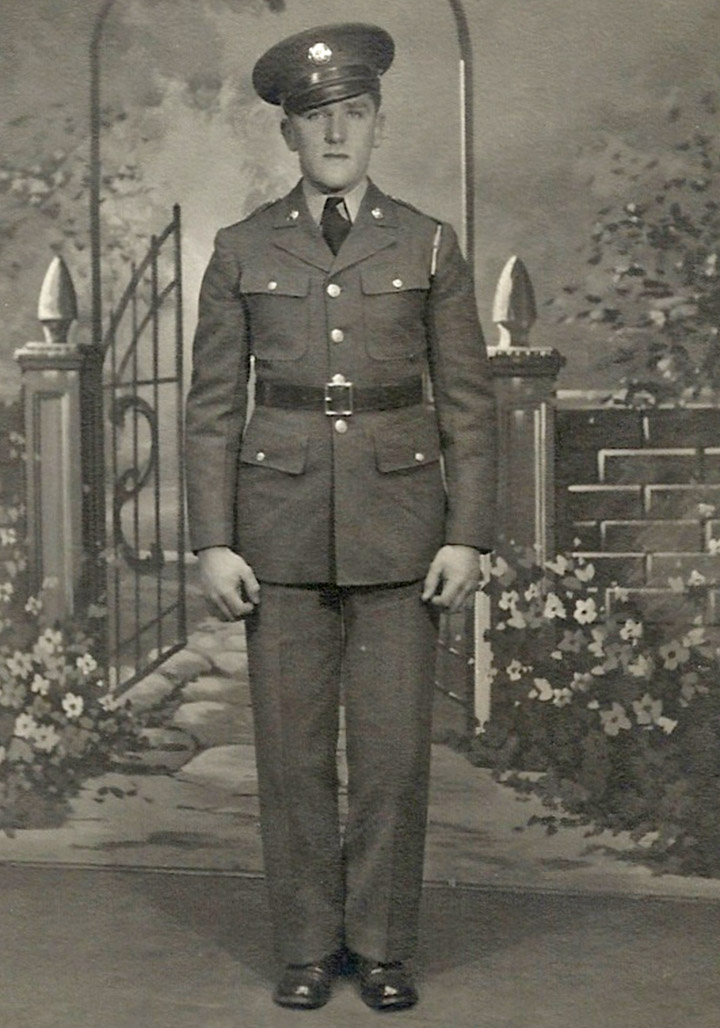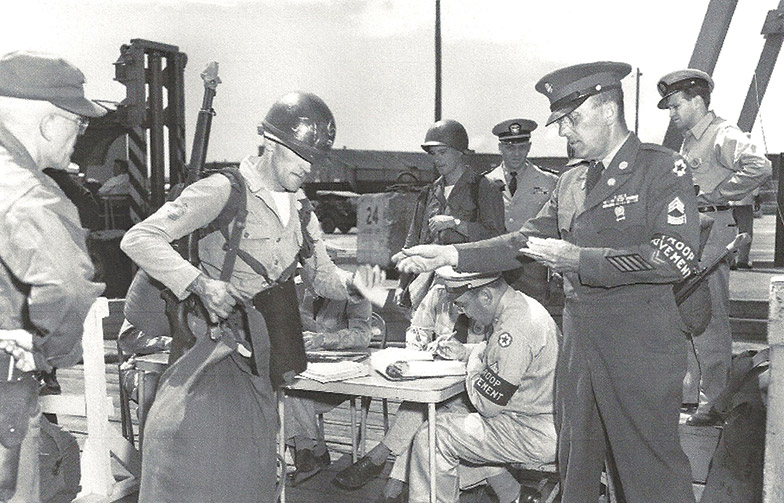Questions?
Feedback?
info@catholicunited.org
This story was originally published in the Nov/Dec edition of Our Catholic Journey magazine. It is reprinted here in honor of Memorial Day, May 28, 2018.
by Jared Roddy, Editor
On July 20, 1950, more than 4,500 soldiers and officers boarded the USNS General Daniel I. Sultan in Seattle, Wash. As the troop transport steamed from its safe harbor to the Korean War, some turned to watch their homeland melt into the horizon. For many aboard, it would be the last time they ever set eyes on America.

Master Sergeant Michael C. Fastner was there, just a few days earlier, he had been camping in Yellowstone National Park with his sister Rosanne when he learned he would be deployed to a place he couldn’t find on a map.
“He was beside himself,” his sister Terry Kegley, now 82, says. “He wondered where Korea even was. But he was always so upbeat about everything. He just kept it to himself so he wouldn’t frighten anyone.”
Almost exactly 58 years after the armistice was signed ending the war, a plane landed in Minnesota, met by Fastner’s two remaining sisters and his son, Michael Belles, and escorted by a nine-man retinue. MSG Michael Fastner was finally home.
The Korean War is remembered for its brutality and the harsh conditions met by the soldiers, when it’s remembered at all. For all the soldiers and marines endured, the poor training and equipment, endless patrols in harsh country and the vicious enemy forces they faced, Korean War veterans are rewarded with the distinction of fighting America’s forgotten war.
But sixty years later, Terry and Rosanne Fastner still remember what it was like at home when the letters stopped coming.
“Our parents were aged at that time, which made it harder,” Rosanne says. “It made it a lot harder.”
The invasion of South Korea began on June 25, 1950. Fastner arrived in Pusan July 31, and was fighting in the Battle of the Pusan Perimeter by August 6. In early September, the defenders broke out and began pushing the North Korean army back. On September 2, Fastner was seriously wounded while defending his position on the Nakdong River. He wouldn’t return to action until mid-October.
Korea wasn’t MSG Fastner’s first experience in combat, or for that matter in being wounded. By the time he boarded the General Sultan he was already a combat veteran of World War II. He had been captured by the Nazis, been wounded and received the Purple Heart, and had a steel plate put in his hip; and he didn’t hold grudges. After the war, he married a woman who served and was wounded herself in the German army. Between the two wars, they had one son and adopted another.
Fastner was the youngest boy of Emmanuel and Rosa Fastner’s 11 children. Like all the rest, he grew up in St. Paul attending St. Agnes parish. At 19, he joined the Civilian Conservation Corps then headed into the service at the outset of WWII.
After recovering from his wounds of September 2, Fastner re-joined his unit. In just a month, the situation had changed dramatically. Gen. Douglas MacArthur had pushed the communists back across the 38th parallel and was pursuing them toward the Chinese border. He would have been fighting the day Pyongyang (the North Korean capital) was captured. Little did the fighting men, or even the General himself know, on that same day, the Chinese Army had crossed into Korea.
MacArthur launched his “Home-by-Christmas” offensive on November 24, directly into a Chinese ambush.
Faster’s 2nd Infantry Division was decimated at the Battle of Ch’ongch’on. As the Eighth Army retreated back to South Korea, MSG Fastner attempted to delay the advancing Chinese near Kunu-Ri. He was reported captured November 30, 1951.
“We never gave up hope,” Rosanne says. They received a little news, knew he’d been captured but heard little about his condition. They stopped receiving letters.

After the war, in 1954, they learned he had been sent to a place called Camp 5 and where, on February 28, 1951, he died of malnutrition and exposure.
There wasn’t much news to go with it,” Terry says. “When he was captured in Germany, we knew he received the care he needed, but with the Koreans, we heard it was bad.”
Years passed. Terry and Rosanne established a relationship with Michael’s namesake son, who was two when his dad boarded the troopship.
We sent him every bit of info and possession we had of Michael’s, and he just treasured it,” Terry says.
Since the 1970s, the government has sustained an effort to identify and return home the remains of American soldiers Missing in Action. Since its creation, the Joint POW/MIA Accounting Command (JPAC) in Oahu, Hawaii, has identified more than 1,800 service members.
Between 1990 and 1994, the North Koreans exhumed and returned what they claimed were 208 individuals. The JPAC began to investigate but had no other means to identify them than by material remains and DNA evidence. More time passed and a call went out for blood samples; the sisters complied and hoped.
For years afterwards, they traveled around the Midwest to hear when JPAC had made a positive ID nearby.
“It’s to encourage surviving families,” Terry says. “To give them hope that yours might one day come home too. It makes you feel a little better, but we stopped going this year because we don’t travel that far anymore.”
So in March of this year, just as they gave up hope that they would ever bring him home, a letter arrived.
“It was an unreal feeling,” Terry says. “After 60 years, they found his body. It was all those same feelings all over again, but this time there was relief. You don’t know how many times we thought maybe he was captured and brainwashed, roaming around in Korea. This was finality.”
“It had to be a miracle,” Rosanne says.
Fastner was given a Mass of Christian burial at St. Agnes church in St. Paul, his long-ago home parish. Governor Dayton ordered flags to fly at half-mast statewide on the day of his funeral. He was buried with full military honors at Fort Snelling National Cemetery. For his bravery in battle and his sacrifice, we think of him and all soldiers, sailors and airmen past and present this Veterans Day. During his service, Fastner received the Purple Heart with Oak Leaf Cluster, the Bronze Star, the Silver Sttar for valor in combat, and the second award Combat Infantryman Badge.
Story idea provided by members Terry Kegley and Rosanne Fastner. Photos provided by Sue Kegley.